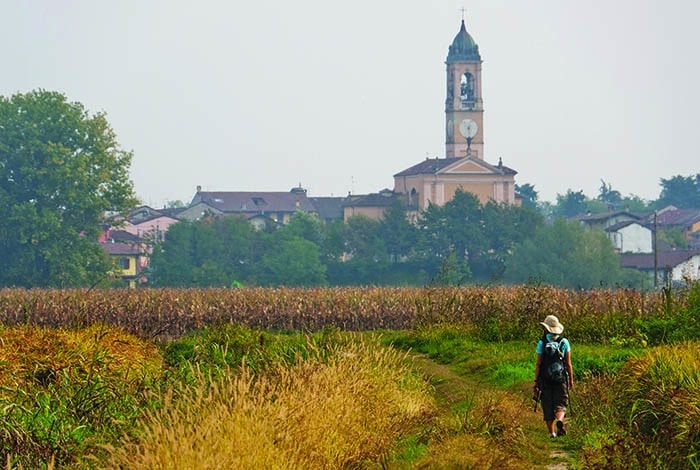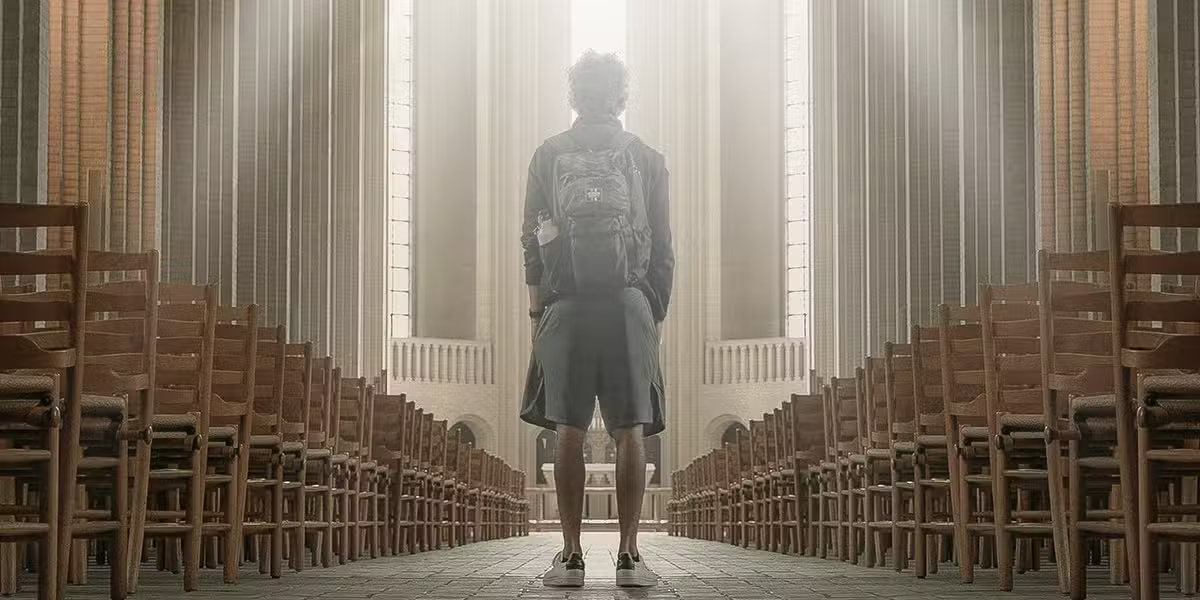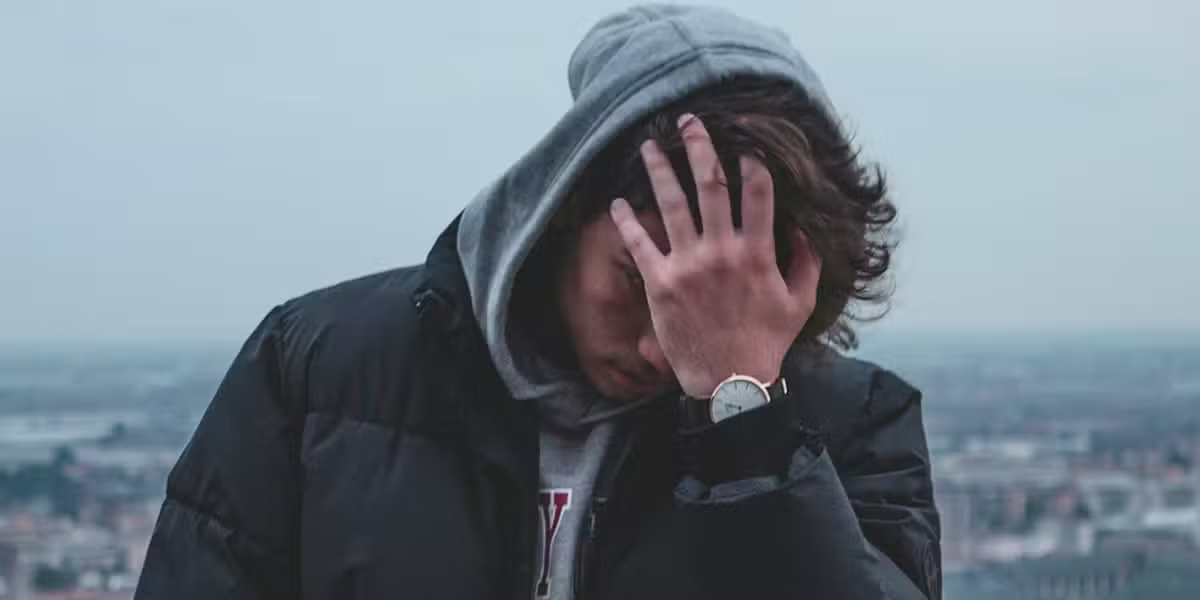In the fallout of the ensuing schism, it’s easy to forget that Martin Luther (1483â1546), soon-to-be-arch-heretic, was once a pious monk. An earnest student of the law and scion of Saxony’s nouveau riche, his life was abruptly altered when his family’s patron saint, St. Anne, delivered him from a frightful storm. He sold his things, changed faculties from law to theology, and settled in the Augustinian Cloister in Erfurt.
Biographers have made much of this transition, lifting up the violation of his father’s trust and pointing to a youthful, defiant rigidity. But there’s nothing left in Erfurt to indicate anything particularly special about this friar’s path. He was a brilliant student, excelling in theology, in languages, and particularly in his passion for the Bible. To this, his teachers pushed him, not only for his piety, but because theirs was an age of renewed passion for the knowledge of the ancient world and the Greek and Hebrew languages.
If there is any sign of Luther’s later turmoil in the cloister, it comes from his confessors. They urged a young Luther to trust in God’s benevolent mercy, meditate on Christ’s suffering, let go his sins, and trust in God’s forbearing. But there was something missing in his care. He had an exceedingly scrupulous soul, yet he couldn’t seem to purge his mind of the last judgment. As Luther imbibed his late-medieval piety, Christ was shrouded in heavenly glory, unapproachable, hovering above the earth in impassable power and glory and frightening omniscience.
It was while he suffered from these anfechtungen, or “spiritual attacks, ” that he was sent to Rome. Generations believed that it was inter-Augustinian struggles that sent this up-and-coming brother to see his order’s vicar general, to argue for his priory’s very strict observance. But more recent scholarship puts his journey a year later, when this conflict had already been resolved. His confessors were wise counselors for their eager, earnest charge. Some afflictions can be cured only by picking up a staff and setting out on a long, long walk.
The Journey Begins
Seeking to understand this younger Luther better, to see just what he saw and much of what he didn’t my wife and I decided to retrace Luther’s steps to Rome. Ours was an ecumenical pilgrimage, framed by the conviction that the Church that raised Luther in the faith could be brought closer to the one he left behind. And so, in August of 2010, we set forth from the Augustinian cloister in Erfurt, Germany, looking forward to an enlightening 1,000-mile walk.
It was a full four days later when we walked into Veste Coburg Castle that we saw another place where Luther actually stayed. In intervening miles, we saw many monuments: Johann Sebastian Bach’s first church at Arnstadt, the Rennsteig path over the Thuringian Hills, the former Iron Curtain, its flimsy fence and razor wire surveilled by dormant watchtowers. But any sign of Luther’s passage lay deep beneath the subsequent layers of history.
It was a pattern that would repeat itself. This early in his career, Luther had left hardly a trace. Of his trip to Rome, there’s but a smattering of evidence, drawn mostly from his students’ notes of dinner conversations with their teacher. We saw the same mechanical clock he mentioned at Nuremberg; finished in 1509, it was a famous marvel throughout Europe. Ulm’s mighty Münster was less magnificent when he visited it than today: the 530-foot-tall steeple we gawked at was only finished in 1890. Even well before the Reformation, though, Luther was not impressed by the Münster’s cavernous nave: “hardly good for preaching ” was his only comment.
Luther also notes the warm, hard-working people of Allgäu, in today’s Bavaria a sentiment we can share. The Alps, for him and others of his age, were frightening and unattractive: “all rock and ice. ” Our own crossing was interrupted by an early snowstorm. Luther mentions Florence, too, though nothing of its David or its Duomo. It was the orphanage that drew his praise, as it was a godsend for maidens in distress and salvation for children otherwise exposed or abandoned.
The Northerner took lessons from the lemon tree, which fruits and flowers all at once. He and his traveling companion (for monks did not travel alone) both caught a fever, possibly malaria, among the marshy lowlands of the Po. He claims to have been healed by eating pomegranates, which we saw ripening across most of Italy. This was Luther’s longest, most exotic trip by far.
If not much is known about his trip, much more evidence survives about his stay in Rome. He entered as we did via Monte Mario, saluting the city of the saints: “Blessed be thou, holy Rome, truly blessed because of the martyrs, dripping with their blood. ” For it was because of their holiness not that of popes that Rome was the goal of pilgrims. Luther made his rounds among the churches, celebrating Mass and doing penance at St. Paul’s Outside the Walls, St. John Lateran, and others. He climbed the Scala Sancta, the steps of Pilate’s palace brought back by St. Helena.
It was here that Luther reported having doubts. Climbing Pilate’s steps won him a plenary indulgence for his grandfather. “Who knows if it is true? ” was his thinking at the time. His fellow clergy were certainly a disappointment, rushing earnest Luther, his hands shaking with the gravity of the act, through the Masses. These glimmerings of later protest have been much magnified by history, and to confusing effect. Historians always seem to claim that his trip to Rome was the turning point toward the Reformation. It makes a kind of sense, but it’s just not true. If Luther’s troubled soul had qualms at the time, it was less in Rome’s ambiguous reputation than in the system of penance that had arisen to uphold it.
Looking for Clues Left Behind
Throughout our pilgrimage to Rome, we kept alert for other things that Luther could have seen but didn’t mention. In Memmingen, a fresco on St. John’s Church declared the site to be “the former Augustinian cloister ” as good a sign as any that “Luther slept here. ” An Augustinian monastery in Chiavenna suggested the same, although the current building dates only from the age of Napoleon. At Pavia, we saw the sepulchre of St. Augustine of Hippo, which Luther perhaps saw, as well. He would have paused upon Sienna’s Campo, as we did, and gazed at its magnificent black and white cathedral.
Here and there, wooden beams advertised venerable dates. Luther may have seen them. But looking closely, it’s a stretch. Though any one foundation may be ancient, constant toil and maintenance are needed to keep anything standing. We see not what once was, but what posterity and love have deemed worthy to pass on.
From time to time, we might have been atop Luther’s actual footsteps. We followed the route indicated by the Römerpilgerkarte a map for pilgrims to Rome printed in 1500 in Nuremberg. But ancient roads get paved, and to avoid the freeways they became, we mostly wandered here and there between the fields, far from the historical highways.
Every once in a while, our path descended into a deep rut, and I would speculate, “Luther walked here. ” Our surest match with Luther’s steps came just before the end. There, the Roman Via Cassia, still nearly pristine after 2,200 years, lies on the surface. We trod with honorific steps the basalt pavers that had borne so many kings and armies through the years. Among this train of royalty and generals, Luther’s steps are silent and invisible.
A Different Landscape
Five hundred years is a very long time. In Luther’s house in Wittenberg, there’s almost nothing left from his era; archaeologists were needed to identify his study. Rome itself is even more significantly altered. It housed 40,000 souls when Luther visited, maybe 50,000. This was a humiliating comedown from its peak in the classical era in excess of 1 million. Sheep grazed far within the Aurelian walls. The Forum, Luther comments, lay “two heights of man ” beneath the dirt.
We see much more of the classical inheritance today. Nineteenth-century revolutionaries often anticlerical dug up and displayed the ruins, reviving old Rome for new national myths. The buildings Luther saw are likewise altered. The old St. Paul’s Outside the Walls burned to the ground 200 years ago; most of St. John Lateran’s magnificence dates from the 17th and 18th centuries. As for today’s St. Peter’s, now so synonymous with the pope, the Vatican, and Catholicism, Luther saw but earthworks and foundations in 1511.
Even the plants have changed. Many of today’s most common crops did not exist in Europe in Luther’s time: corn, potatoes, tomatoes, and tobacco came from America; rice from the East. Our constant, flowering companions, touch-me-nots, whose seeds leap from sprung pods when grazed against, are from the Himalayas. Geology itself, so solid by our human scale, has altered in the interim: many rivers Luther witnessed wild have been made into canals; the Po’s bank is 2 miles away from where Luther would have crossed.
Making Peace with Luther
Unlike what we expected, we found signs of Luther more in people than in places. In Oettingen, a church organist invited us to stay the night; he gave us an impromptu Lutheran catechism and a lesson in appreciating Bach accompanied by our own private concert! In Chiavenna, a Catholic family took us in. When they learned that Luther walked through their town, they were enthusiastic. They had just returned from a retreat where a local priest had delivered a primer in Luther’s theology and the struggles of the Reformation. In Florence, Friar Ivan at Santo Spirito assured us with a conspiratorial wink that “Luther was a good Augustinian. ”
Of course, these anecdotes have no authority by themselves. For 500 years, Protestants and Catholics have waged wars both with words and with slashing swords. Princes and kings, mad for power and regime change, expropriated ecclesiastical lands and bishops’ palaces; incensed peasants defaced sacred statuary and images. Churches, in the rare case where there was cohabitation, such as in Strasbourg, were cut in two, a wall dividing Christian brother from Christian sister hardly evangelical. Until quite recently, intermarriage between Protestants and Catholics was an outright scandal.
The litany of attendant struggle is both tiresome and disheartening. But one thing that is persistent in these tales of strife is the lack of real conversation about theology. Insults and assertions flew here and there for centuries, all heat and little light. This shifted dramatically 50 years ago with the Second Vatican Council’s “Decree on Ecumenism ” ( “Unitatis Redintegratio “), which opened doors for reconciliation and dialogue. The accomplishments have been slow but steady, and trust between theologians and Church leaders has grown.
Every once in a while, our path descended into a deep rut, and I would speculate, Luther walked here.
The biggest strides are less in absolute agreement than in understanding. Even on the infamously divisive topic of justification, Lutherans and Catholics can affirm that their divergence on this doctrine ought not be Church-dividing. On a local level, Catholics, Lutherans, and many other Churches are now in close fellowship and even share many ministries.
Rome itself seems to have made peace with Luther. In 2015, at the behest of local Protestants and with the blessing of Pope Francis, the city officials inaugurated Piazza Martin Lutero. You can visit it today on the top of the Oppian Hill.
Most encouraging of all, last October 31, on Reformation Day in Lund, Sweden, Argentinean Pope Francis stood side by side with the Chilean pastor and president of the Lutheran World Federation, Martin Junge. Both dressed in white albs and wore red stoles for the festive day. Pope Francis’ sermon was in Spanish, and good cheer was in the air. That’s quite a change from 50 years ago not to mention 500.
Sidebar: Words of Dissent
“Here I stand; I can do no other. God help me. ” That famous utterance is attributed to Martin Luther, speaking before Holy Roman Emperor Charles V at a meeting in Worms, Germany, in 1521, a few years after his protest that sparked the Protestant Reformation. But did he really say it?
Baylor University historian Elesha Coffman wrote some years ago, in Christianity Today, that Dr. Scott Hendrix concluded the quote is probably a paraphrase, and was not given in the defiant tone that one might assume. Luther stood before a pile of his disputed books and calmly explained that he felt compelled by sacred Scripture to write down his thoughts. She reports Reformation scholar Heiko Oberman suggesting Luther’s words might well have been: “I can believe neither pope nor councils alone, as it is clear that they have erred repeatedly and contradicted themselves. . . . My conscience is captive to the word of God. Thus I cannot and will not recant, because acting against one’s conscience is neither safe nor sound. God help me. Amen. ”
Dr. Hendrix noted, reported Coffman, that Luther’s words created a sensation and “traveled fast, ” and thus might not have been exact. On the other hand, in a recent e-mail conversation, Dr. Coffman tells St. Anthony Messenger of another Reformation scholar pointing out that Luther’s later writings use “Here I stand. . . . ” Strident or not, we can be sure that they capture his meaning. Says Coffman, “Who among us hasn’t thought of a pithy retort long after the moment in which it would have been useful? ” J.F.
Sidebar: The Idea That Changed the World
The Lutheran 500th anniversary will be celebrated worldwide as a moment when new possibilities were imagined and the then-excesses of the Roman Catholic Church were called into question. A new docu-drama, Martin Luther: The Idea That Changed the World takes up those themes, among many others.
The drama lays out the events of Luther’s life a life that led him into areas he would never have predicted, and which radicalized him over time. We know of the guilt-plagued Luther, of the man who, in a huge thunderstorm, learned something about God’s power, but there is much more to the man and his accomplishments. The experts help us to unpack those, from hymn writing, to the birth of public schools, to the huge role of that era’s social media the newly invented printing press–to really what led to the pilgrims and our own United States.
Cardinal Timothy Dolan is interviewed, along with about 5 Lutheran experts, and one other Catholic. These mentors help us to put it all into context, and to see how Luther’s actions continue to play out today. His was an idea whose time had come; he was the flawed genius who brought that idea into the world. It’s a show worth watching. J.F.
Andrew L. Wilson received his doctorate from Princeton Theological Seminary. His pilgrimage to Rome was featured in the Wall Street Journal and on Rick Steves’ radio program. Here I Walk: A Thousand Miles on Foot to Rome with Martin Luther was recently awarded best religion book of the year by the Midwest Independent Booksellers Association. Find out more at HereIWalk.org.








